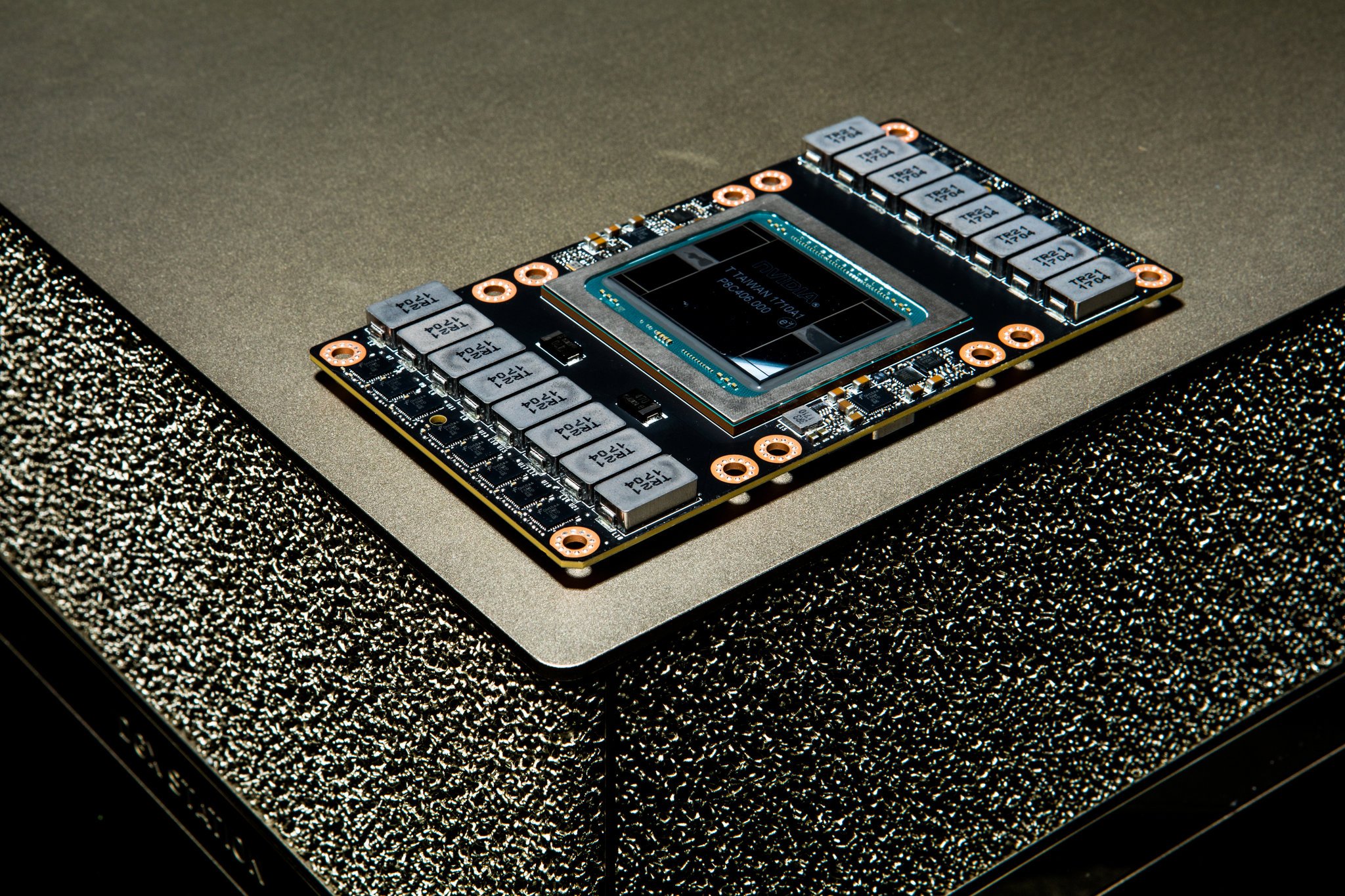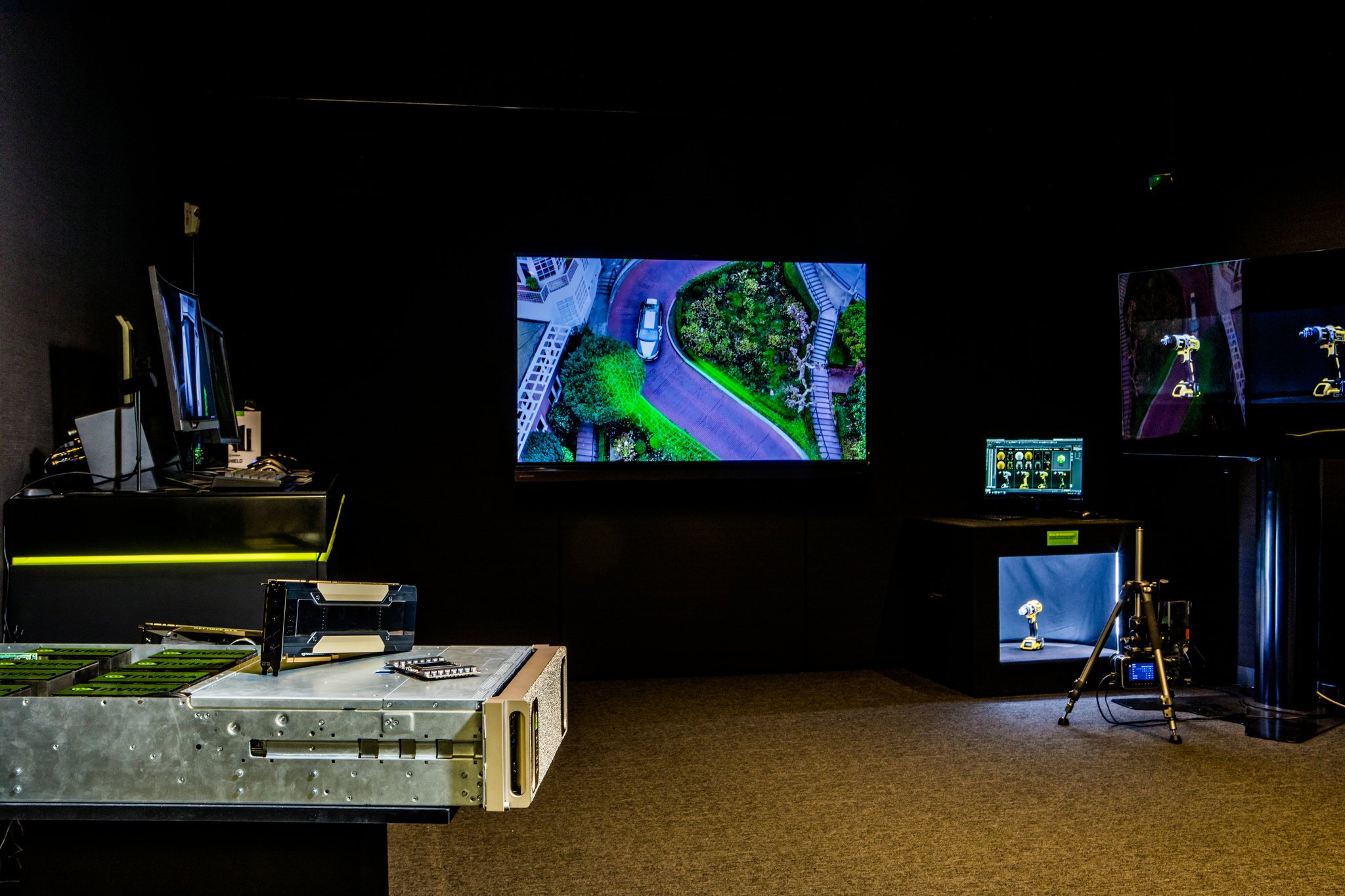Why the 24-year-old technology company has become one of the most promising
Nvidia, a manufacturer of graphics processors, in the wake of an artificial intelligence boom places its chips in drones, robots and robobiles

Engineers from CTA.ai , a Polish imaging startup, are trying to popularize a more comfortable alternative to colonoscopy . To do this, they use computer chips, best known to fans of computer games.
These chips are manufactured by Silicon Valley, Nvidia. Its technology can help to quickly sort images taken by sensors the size of a tablet swallowed by the patient, which allows doctors to detect abnormal bowel function 70% faster than if they studied the recorded video. As a result, the procedure costs less, and the diagnosis is more accurate - says Mateusz Marmolovsky, CEO of CTA.
The application of chips in the field of health, which promotes the CTA - just one of many new goals for Nvidia. The company's chips - GPUs, or GPUs - are used in drones, robots, robobiles, servers, supercomputers, and virtual reality equipment. The key reason for their prevalence is how quickly chips can cope with complex tasks in the field of artificial intelligence like recognition of images, faces and speech.
')
The general excitement about the use of AI has turned the 24-year-old Nvidia into one of the most popular companies in the technology sector. Its market capitalization over the past few years has increased sevenfold, and exceeded the estimate of $ 100 billion, and revenue only in the last quarter increased by 56%.
The success of Nvidia highlights the company in the chip industry, experiencing a continuous decline in sales of personal computers and a slowdown in demand for smartphones. Intel, the largest chip maker in the world and a manufacturer of semiconductors that have long served as the brains of machines such as PCs, showed an increase in revenues of just 9% in the last quarter.

Demonstration room in the company office
“They feel absolutely confident,” said Hans Mosesman, an analyst at Rosenblatt Securities, about Nvidia, which he has been following since its launch on the stock exchange in 1999.
The breakthrough is led by Renxun Huang , the founder and CEO of Nvidia, whose strategic instincts, demanding approach and dark style in clothes evoke associations with Steve Jobs.
Juan - who, like Jobs at Apple, advocated the construction of an unusual building for the headquarters, to which the company will soon move - more than 10 years ago made a key bid for several modifications of the chip and software so that the GPU could not only draw pictures on the computer screen.
“It cost the company incredible money,” says Juan, 54, who estimates that Nvidia spent about $ 500 million a year on these changes, with an annual revenue of $ 3 billion. According to estimates, the GPU was turned into computational general purpose tools took about $ 10 billion
Juan's bet on CUDA as a new computer paradigm underwent active changes. Intel's dominance became possible for the most part due to improvements in computing speed, which went hand in hand with Moore's law. This observation suggests that, on average, in the history of computing, manufacturers approximately once every two years doubled the number of transistors that can be crammed into chips. And now this speed increase has slowed.

The slowdown has led developers to think about more specialized chips that can work in conjunction with Intel processors and grab more of the miniaturization of the chip industry. Nvidia, which changed the purpose of its chips, instead of starting development from scratch, got a big head start. Using its chips and software as part of the CUDA project, the company gradually created a technology platform that became popular among many programmers and companies.
“They were really well-behaved behind them,” says John Hennessy, a computer scientist, who retired from Stanford University as president last year.
Today, Nvidia chips make their way into the corporate segment. The German software giant SAP advertises the creation of AI, called depth learning, and uses Nvidia's GPUs for tasks like speeding up payment processing and searching for resumes matching jobs.
SAP also demonstrated how Nvidia-based software recognizes company logos in sports events such as basketball or football, so that advertisers can evaluate how well their brands show up during games and improve the process.
“Previously, it was impossible to imagine such a thing,” says Jürgen Muller, director of SAP innovation.
Such applications go far beyond the original ambitions of Huang, who was born in Taiwan and studied electrical engineering at Oregon State University and Stanford before getting a job with chip makers from Silicon Valley. He launched Nvidia with Chris Malachowski and Curtis Prim in 1993, initially with the goal of helping personal computers improve graphics quality and match rivals from the world of gaming consoles.
Malachowski says that the company's first product did not take off, and crowds of competitors rushed to the graphics market.
But Nvidia remade its products and strategy and gradually separated itself from its competitors, and became the clear leader in GPU accelerators used in PC games.
GPUs create triangles from which frame structures are formed, simulating objects and assigning colors to screen pixels. To do this, it is necessary to carry out many similar instructions in parallel, therefore, as a result of evolution, graphics chips have acquired many tiny processors. On the new GPU Volta, announced by Nvidia in May, contains more than 5,000 of these processors. The new server chip from Intel contains only 28 large general-purpose processor cores.
Nvidia launched the CUDA project in 2004 after hiring Jena Buck, a graduate student at Stanford and a company trainee who worked on a software task to simplify working with many GPU computing engines. Soon, Nvidia made several changes to its chips and created helper programs, including support for a standard programming language to replace the complex tools used to send commands to graphics chips.
The company has built CUDA into consumer GPUs and professional products. This decision turned out to be critical, according to Buck, because it turned out that researchers and students who owned laptops or gaming PCs could deal with software in campus laboratories and in dormitories. Nvidia has also convinced many universities to offer courses on new programming techniques.

On the construction of the new headquarters of Nvidia
Programmers gradually began using GPUs in applications used for various tasks, such as climate modeling or oil or gas exploration. The new phase began in 2012, when Canadian researchers began applying CUDA and GPU to unusually large neural networks, a multi-layer software required for in-depth training.
Such systems are trained to do such tricks as facial recognition, using the processing of millions of pictures instead of following instructions that have been programmed by a person. Buck claims that before a GPU appeared, it would take an entire semester to train such a system. And with the help of new technology, researchers can complete the process in a few weeks, days, or even hours.
"I can not imagine how this could be done without a GPU," said Silvio Savarese, associate professor at Stanford, who runs the SAIL-Toyota AI Research Center there.
But competitors claim that the battle in the field of AI between chip manufacturers has just begun. Intel, whose standard chips are widely used to perform tasks in the field of AI, has invested heavily in the purchase of Altera, a manufacturer of programmable chips, start-ups specializing in in-depth training and machine vision, as well as Israeli Mobileye, a manufacturer of devices for cars.
Google recently announced the second version of an AI chip developed in the depths of the company that helped beat the world go champion. The company claims that the chip has significant advantages over the GPU in some applications. Startups like Wave Computing make similar claims.
But Nvidia will be hard to get around. The company, for example, can afford to spend more money on chips than its competitors in the field of AI - Huang estimates that Volta has poured $ 3 billion into a record for the industry - thanks to a steady stream of revenues from the growing gaming industry.
Nvidia claims that more than 500,000 developers use GPUs today. The company expects other manufacturers to help expand this GPU community when it begins to freely distribute an open chip design suitable for use in simple applications related to in-depth training — for example, in light bulbs or in cameras — that the company does not plan to do.
As Juan said, “AI will affect every company in the world. We will not be engaged in all possible tasks. ”
Source: https://habr.com/ru/post/373847/
All Articles